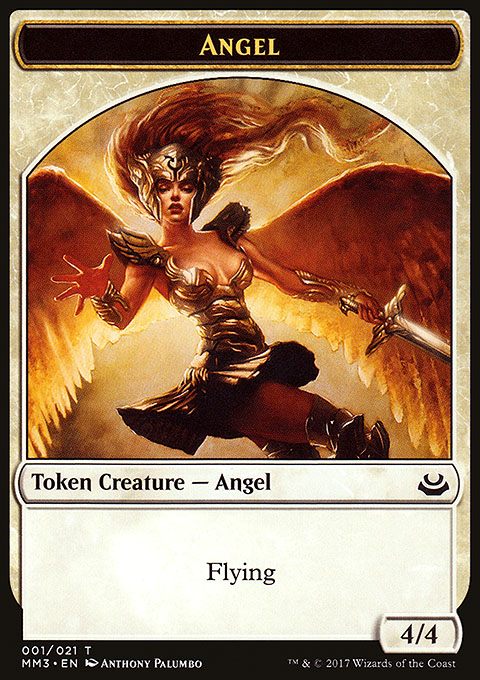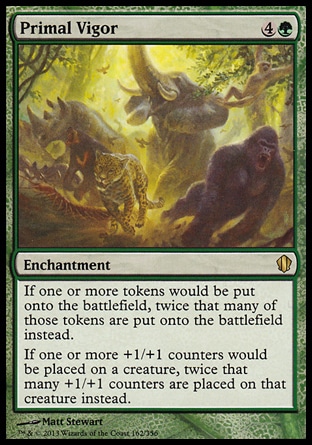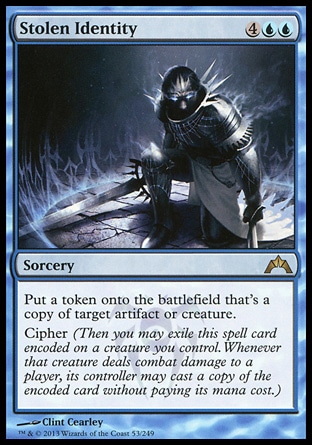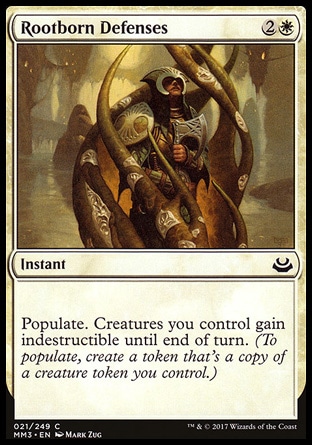We’ll take Geist of Saint Traft as a comfy example to talk about delayed triggers, missed triggers and copying tokens.

Oracle Text:
Legendary Creature — Spirit Cleric
Hexproof (This creature can’t be the target of spells or abilities your opponents control.)
Whenever Geist of Saint Traft attacks, create a 4/4 white Angel creature token with flying that’s tapped and attacking. Exile that token at end of combat.
- Both Red Elemental Blast and Pyroblast can counter the Geist of Saint Traft spell. Note that Hexproof isn’t of any help here (see below).
- If you control a Stormscape Familiar, your Geist of Saint Traft costs {UW} to cast. Its mana cost {1UW} and mana value=3 doesn’t change at that!
- When Blinding Light resolves, Geist of Saint Traft doesn’t get tapped because it’s white.
Geist of Saint Traft is a legendary creature, so if other legendary permanents named Geist of Saint Traft are under your control, you need to choose one, then put all other into their owners’ graveyards as SBA are performed. You may read about the “legend rule” in detail.
Geist of Saint Traft is mythic rare. This doesn’t mean anything in particular in terms of the game rules. A card’s rarity only indicates the probability of encountering it in a booster pack of the edition in which it was released with that rarity.
Geist of Saint Traft has two subtypes (or creature types) — Spirit and Cleric. Same as with colors, those are two values of one characteristic:
- If you control an Edgewalker, your Geist of Saint Traft will cost {1U}.
- You may sacrifice Geist of Saint Traft to pay the activation cost of Cabal Archon’s ability.
- You may return Geist of Saint Traft from your graveyard to your hand through Angel of Flight Alabaster’s trigger.
- The trigger of your Requiem Angel won’t go off when your Geist of Saint Traft hits the graveyard.
Geist of Saint Traft’s first ability, Hexproof is a static ability that functions only while the Geist is on the battlefield. It prevents your opponents from targeting the Geist with spells and abilities they control. This doesn’t mean that Geist of Saint Traft cannot fall under the effect of an opponent’s spell or ability. The clue word here is target. If an enemy spell doesn’t have this word in its text and it isn’t an aura (aura spells do target by definition), then Hexproof doesn’t protect the Geist. Hexproof also can’t help against effects of static abilities.
Now let us inspect Geist of Saint Traft’s second ability. This one is rather spectacular.
”Whenever Geist of Saint Traft attacks, put a 4/4 white Angel creature token with Flying onto the battlefield tapped and attacking. Exile that token at end of combat”.
- Whenever — singal word informing us that this is a triggered ability;
- Geist of Saint Traft attacks — the triggering event. We already know how these triggers function. The most important thing is to understand that the Geist should not just become an attacking creature, it must be declared an attacker, which happens only once in every combat, at the beginning of Declare Attackers step, as a turn-based action. If you don’t feel this difference, it is explained in detail in the article on Hero of Bladehold.
- put a 4/4 white Angel creature token with Flying onto the battlefield tapped and attacking. Exile that token at end of combat — the effect of the triggered ability. We get the effect when the trigger resolves. The trigger going off is not enough to get the effect. There are situations when the trigger doesn’t even reach the stack, or when it is removed from the stack before resolution.
- at end of combat — signals another trigger, a delayed one.
Let us give a close look at the effect of Geist’s second ability. The first part of this ability invokes a creature token under its owner’s control. Here is one:

Name: Angel
Type: creature
Subtype: Angel
Supertype: none
Mana cost: none
mana value: 0 (as per rules)
Color: White
Edition symbol: none
P/T: 4/4
Abilities: Flying
Note that the Angel token has no other abilities.
The Angel is put onto the battlefield tapped (as instructed by the effect) and attacking.
- The player controlling the token chooses which player or Planeswalker is attacked. It doesn’t have to be the same player or planeswalker attacked by Geist of Saint Traft.
- The Angel was never declared an attacker, so if Geist of Saint Traft was the only creature declared attacking, Exalted on permanents you control will trigger.
The next part of the effect is the creation of the delayed trigger.
Exile that token at end of combat.
- at — signals a triggered ability;
- end of combat — triggering event, a specific moment on the timeline of a turn: the beginning of the end of combat step.
- Exile that token — trigger effect. A token that hits the Exile zone ceases to exist the next time SBA are performed.
This delayed trigger
- is created when Geist of Saint Traft’s trigger resolves;
- is not an ability of the Angel token, it cannot be removed with effects that state “loses all abilities” and cannot be copied when copying the Angel;
- does not depend on whether or not Geist of Saint Traft is on the battlefield;
- triggers only once. If it is countered by Disallow, it never triggers again. When Sundial of the Infinite is used, two scenarios are possible;
- is controlled by the same player who controlled the Geist’s trigger as it resolved;
- tracks the object it refers to (the Angel token) even if the latter changes characteristics or controller.

When Primal Vigor is on the battlefield, you will put two Angel tokens. Both tokens will appear tapped and attacking. The delayed trigger will track both tokens: as it resolves, all tokens created at the original trigger’s resolution will be exiled.


Now that we are dealing with triggers, we need to mention what happens when a player forgets about his or her trigger.
Geist of Saint Traft’s trigger changes the visible game state: we don’t use invisible tokens =) Such a trigger is considered missed if the opponent moves to the next step (which is noticed when he or she allows an opponent to declare blockers).
If you face a forgetful opponent who controls a Geist, make sure you ask him or her whether you may block after the Geist has been declared attacker. His mumbling “Sure” in response will mean unambiguously that the Geist’s trigger has been missed.
In tournaments at Competitive REL, if you don’t want to see the token there (which I can totally understand), you don’t have to inform anyone. If you have some reason for your opponent to still get the Angel token (maybe you have cunning plans related to that Angel), you may call a judge. If your opponent realizes his or her error shortly after the trigger has been missed, he or she calls the judge. In any of these two cases, your opponent’s wish is not taken into account: you decide whether or not the trigger is put onto the stack.
In tournaments at Regular REL you may also keep silence when your opponent misses the trigger, but unlike Competitive, the judge may allow the opponent to put the Angel token onto the battlefield tapped and attacking. Note that some judges will not allow that and instead ask you just like at Competitive. Sounds too soft? Just think that at Regular we play casual regular tournaments: FNMs, Game Days, usual drafts etc. We don’t play these games for the sake of competition, but rather just for fun. The rules there are soft and not very strict towards inexperienced (for now) players.
The above is true only as long as the trigger was missed less than one full turn ago. If the trigger was missed before the beginning of last turn’s phase or step identical to the phase or step players are currently in, the judge will not take any action. A delayed trigger changing zones is a whole different story. This one doesn’t have a limitation period: the situation will be fixed even if multiple turns have passed since the error took place. As soon as the players realize the Angel token hasn’t been exiled whereas it should have, they must call a judge immediately.
In events at Regular REL, the judge will have the player exile the token immediately. At Competitive REL or higher, the judge will ask the opponent when he or she prefers to have the token exiled: immediately or at the beginning of the next phase.
Translated by Witas Spasovski

Since the delayed trigger is not an ability of the Angel token, it isn’t a copiable value of the token, so it isn’t copied when the token is copied. When the delayed trigger resolves, the player is instructed to exile only the token(s) that was (were) created by the Geist’s trigger. The delayed trigger has no idea about that token’s copies.
Aside from that, a permanent’s status isn’t copied either. Unless special effects are in motion, a copy of the attacking Angel will enter the battlefield untapped (and most certainly not attacking).